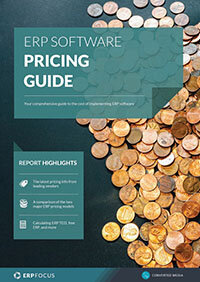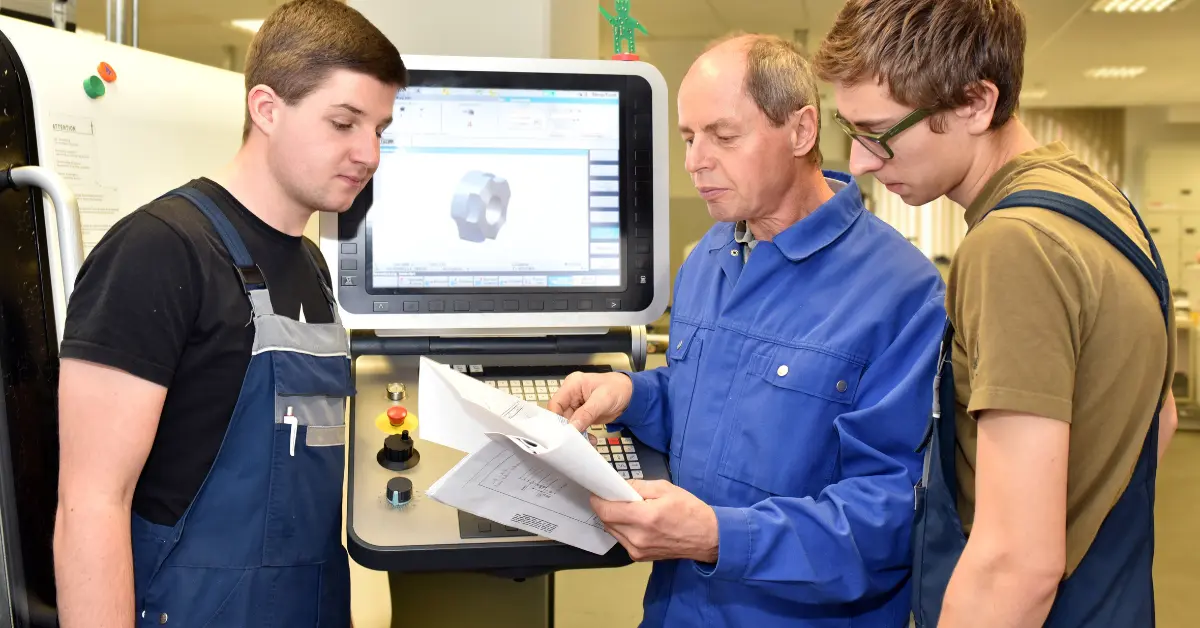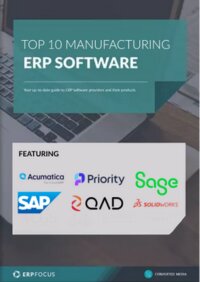Benefits of ERP for reducing manufacturing costs
This article is one of a series that looks at using ERP to reduce costs. Other articles look at reducing purchasing costs, inventory holding costs and administration costs; finishing up with a look at using ERP to improve profitability (not necessarily the same thing as reducing costs).
When people think of ERP generating manufacturing cost savings, they generally think of efficiency improvements on the shop floor and, indeed, this article will look at some of those. But ERP can do much more than that to help, so some other possibilities will be examined also. It will be useful, though, to begin with shopfloor efficiency because there are things that can be achieved here quickly and easily; whether in trying to improve an existing system or in trying to implement a new one.
The first thing that companies have to decide is whether their priority is to get more through the factory or to get it through more cheaply (achieving one does not guarantee the other). If they think that they want to do both; that's fine, and some tools will help achieve both, but their efforts will not be focused and they will be more likely to fall between two stools. The good news is that, whatever they decide, a range of options is available.
Check out the top manufacturing ERP modules that your ERP should include
Finite capacity scheduling (FCS) systems are much more affordable than they were just a few years ago and can make a noticeable difference to throughput in batch manufacturing environments. The percentage increase possible will depend upon where an individual company is starting from, but looking at an example, with easily scalable numbers, can show what even a 5% improvement will achieve. Some companies have product costs which are 10% labor and overheads and 90% materials; whilst for others, those numbers are reversed, so a 50/50 split will be used, knowing that the numbers can be easily flexed. Different companies also have differing profit expectations so the example uses product standard costs and not sales prices to measure throughput. A throughput of $100m at standard cost will be used because this again can be easily flexed.
In this example, a 5% increase in throughput will result in an extra $5m of product. That may not sound game-changing but that $5m value was generated at a cost of just $2.5m because the labor and overhead element came from efficiency savings and the only real cost was the material content.
Another way of increasing throughput is by adopting Materials Requirements Planning (MRP) because this, when properly implemented, gets more out of the factory by reducing the amount of time that is wasted. It does this in two main ways: by minimizing time lost on set-ups and changeovers through consolidating requirements, and by reducing stoppages and unplanned changeovers caused by material shortages. It can also improve throughput by offering better options than Economic Order Quantity (EOQ) calculations (ranging from lot-for-lot through to number of days supply) so that production capacity is not wasted on making things that are not actually required. It can be argued that using these options to manufacture in smaller batches will result in a drop in efficiency but the reader is encouraged to read another blog in this series, 'Using ERP to reduce inventory holding costs' and to then do the math.
Turning to cost reduction; the above measures that can be taken to get more out of the factory can sometimes get unit costs down also (although in some industries and some manufacturing environments they won't). Even if an increase in throughput is not immediately required, FCS can help by reducing overtime costs whilst MRP can lead to a reduction in materials costs; but there are other options that will have a more focused effect and two that will spring to mind are improved quality management and improved costing.
Looking first at improved quality management; items that fail quality inspection cause problems regardless of where they occur. The further down the chain they progress before faults are found, the greater the impact on costs but, even when raw materials are caught at goods-in inspection, the cost will be damaging because, even then, the disruption to the production plan will have an effect. When problems don't raise their heads until mid-production, upon receipt at the customer or, even worse, at the customer's customer, the impact both on rectifications costs and on reputation are even worse.
ERP can help in two ways: first it can identify problem items and problem suppliers. When items are rejected, whether at goods-in inspection or during or after production, suitable codes can be attached to the transaction to allow subsequent analysis. When problematic items and suppliers are identified, they can be flagged for further scrutiny and, in the meantime, increased levels of inspection.
Secondly, ERP can help by calculating the cost of rejects and rework. When production is halted, the lost time can be booked to suitable analysis codes and, when items have to be reworked or remade, companies can either book the time and materials required against relevant general ledger codes or can raise specific rework and replacement Works Orders, depending on their needs.
Key to reducing costs is knowing what those costs are and being able to measure and report them accurately. There are different costing methodologies available in ERP systems, such as Standard Costing, Actual Costing and Weighted Average Costing. A detailed discussion on these, how they work and which manufacturing environments they favor, is the subject of a separate blog on this website so here it may suffice to make two points. One is that, although changing a company's costing methodology would be a major undertaking (and probably something that is likely to be strongly resisted in some quarters), if the current system is not giving the information necessary to facilitate improvement, there may be no alternative. Action taken to reduce costs must be targeted if it is to be effective.
The second thing to consider is may also be necessary to change how things are done on the shop floor so that the required data can be collected easily. Raising specific rework and replacement Works Orders has already been mentioned, as has attaching analysis codes to time and material transactions, but another problem can be that some companies backflush material issues; so only the bill of material quantity is ever transacted. If that is the case; new procedures may need to be put in place so that overages and replacements are recorded in a way that makes analysis possible.
Either way; it is clear that ERP has the capability of making a significant contribution to the reduction of manufacturing costs.
Free white paper

ERP Software Pricing Guide
Get the latest pricing information on over 80 popular ERP systems, and learn how to budget for your ERP project in our free guide

Featured white papers
Related articles
-

4 training tips for manufacturing ERP success
These four training tips will help your employees get the most out of your new manufacturing ERP ...
-

CMMC Compliance: What Aerospace and Defense Manufacturers Need to Know
Key insights on CMMC compliance, deadlines, and securing DoD contracts with CMMC 2.0 certificatio...
-

ERP for make-to-order manufacturing
How can ERP help your make-to-order manufacturing business thrive?




